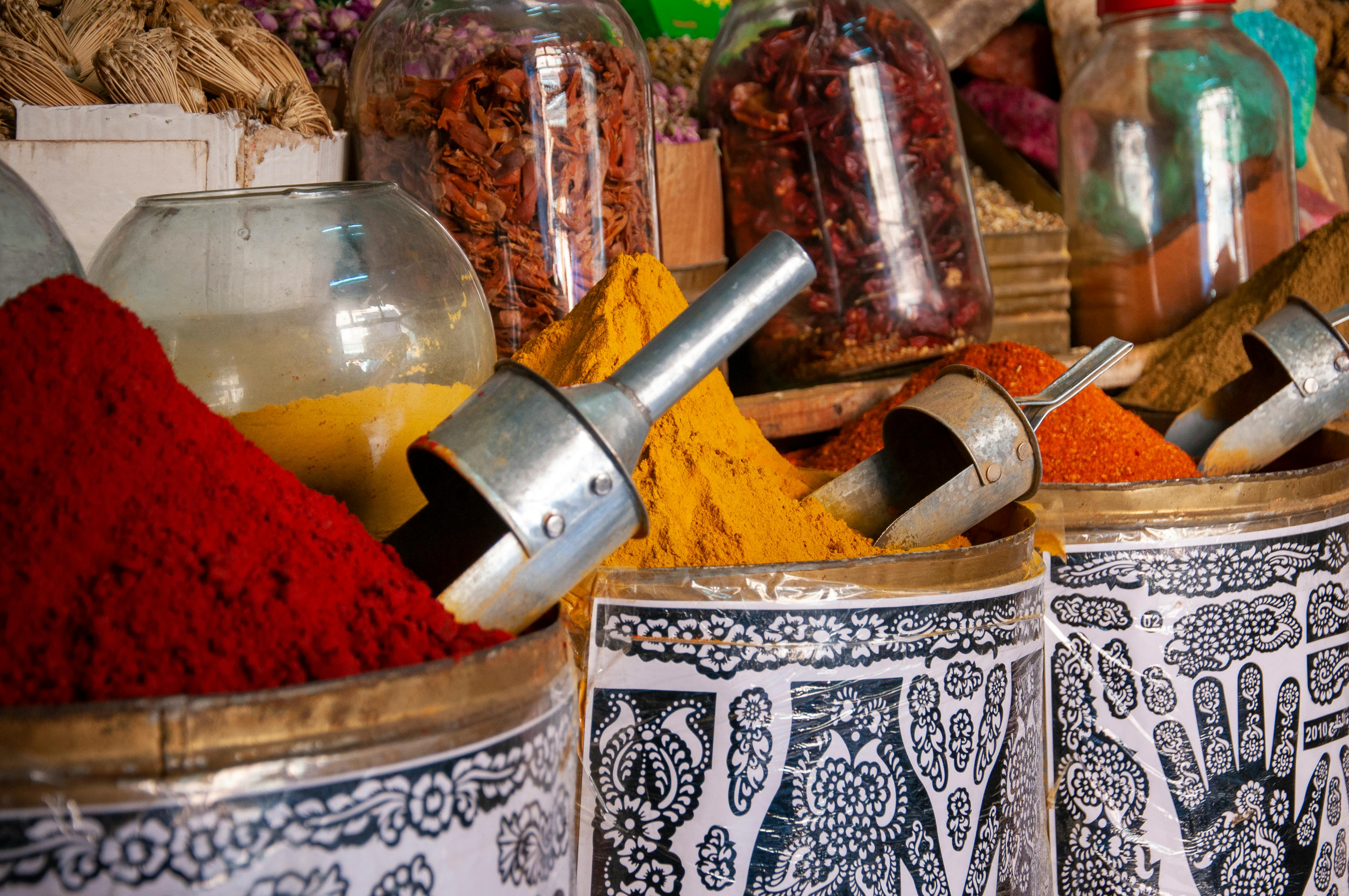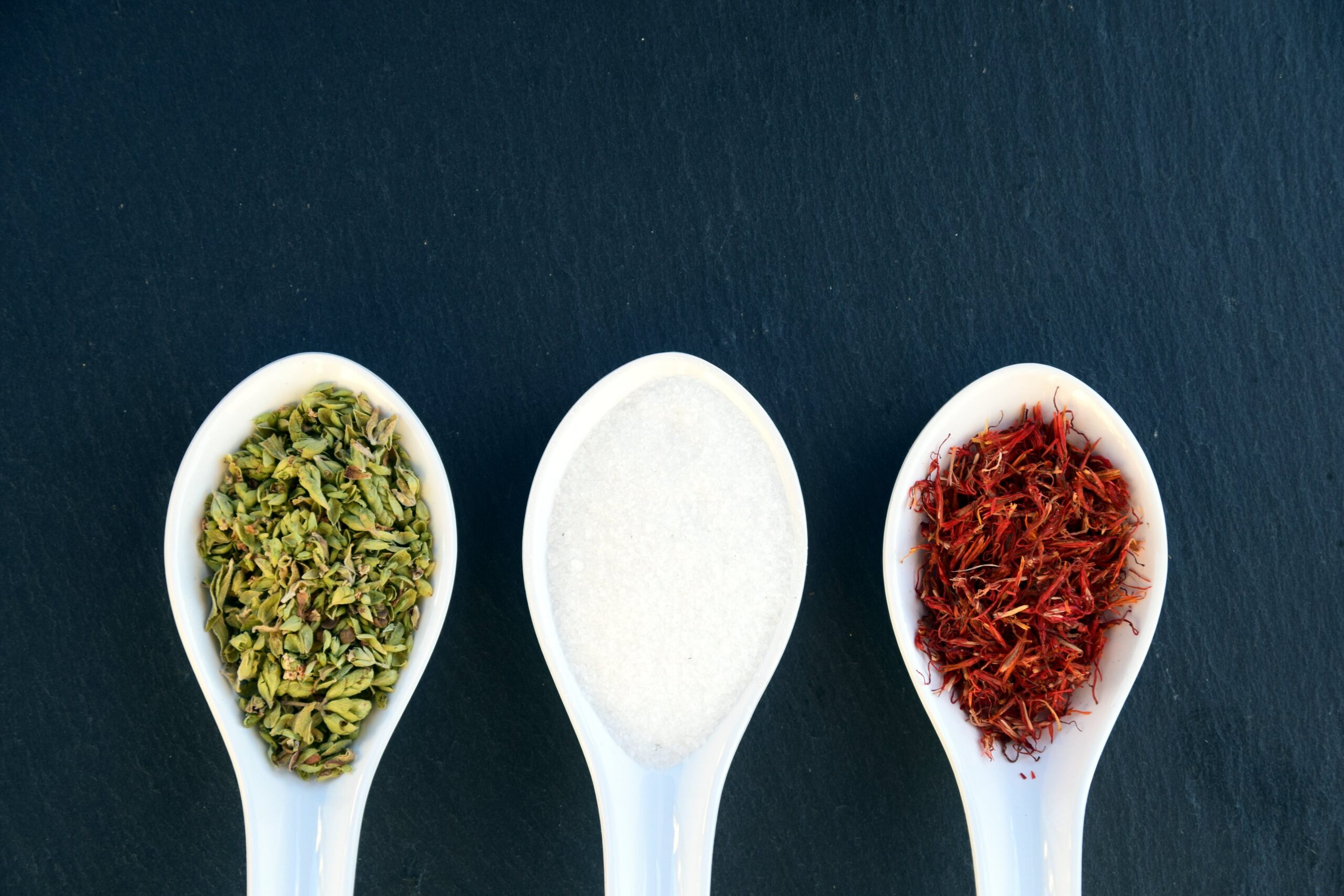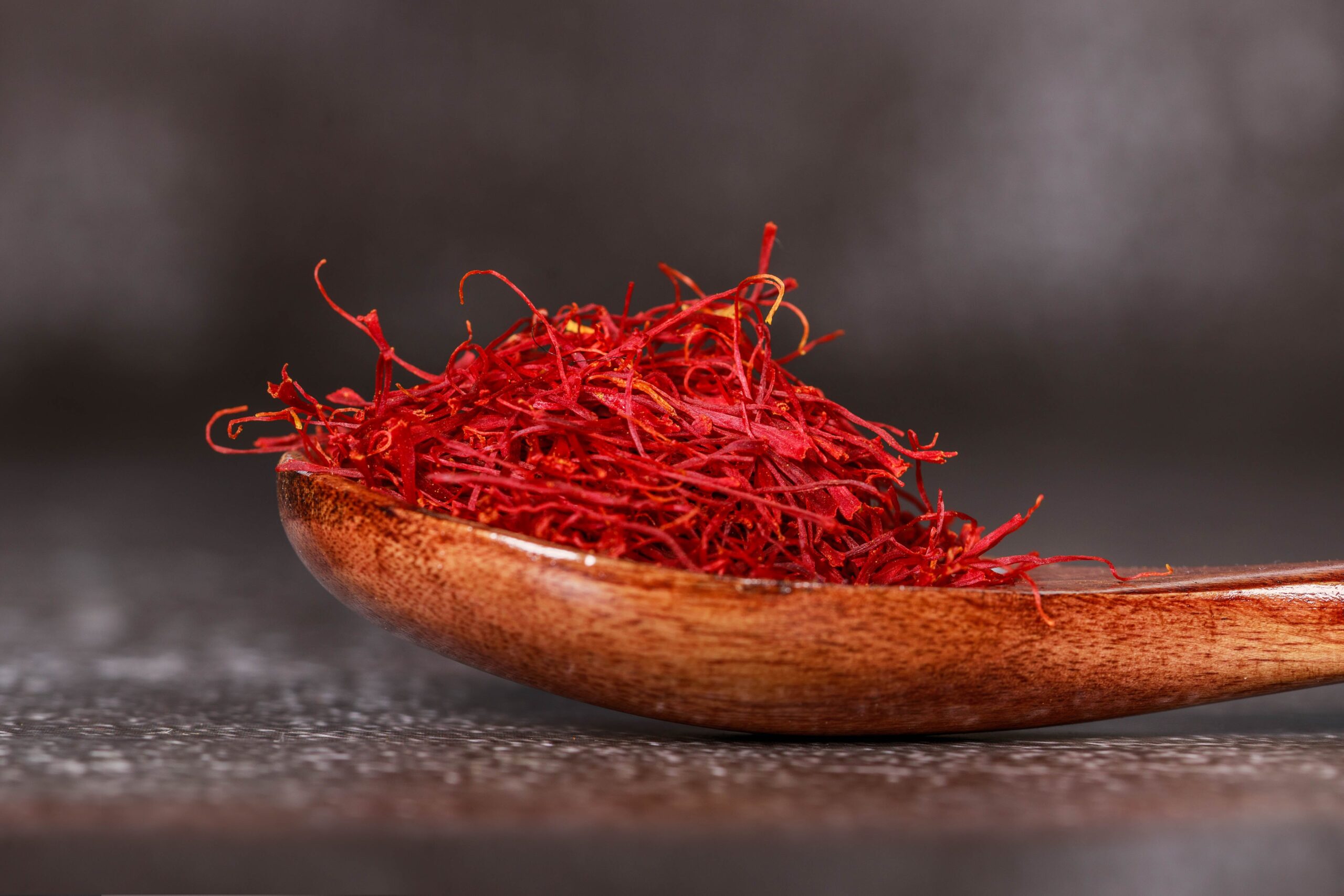Have you ever wondered about the secrets behind the rich and diverse flavors of Indian cuisine? Well, look no further because we are about to take you on a journey through the world of saffron, the precious spice that has captivated taste buds for centuries. From its vibrant color to its distinct aroma, saffron is a staple in Indian cooking, adding a luxurious touch to dishes and making them truly unforgettable. Join us as we explore the history, benefits, and versatility of saffron, and learn how this prized spice continues to shape the culinary traditions of India. Prepare to be amazed at the wonders of saffron and get ready to embark on a mouthwatering adventure you won’t soon forget.

History of Saffron in India
India, known for its rich cultural heritage, is home to many precious spices. Among them, saffron holds a special place. This article will take you on a journey to explore the fascinating history, cultivation, and uses of saffron in India. From its origin to its symbolism and global demand, we will delve into every aspect of this precious spice.
Introduction to Saffron
Saffron, scientifically known as Crocus sativus, is a spice derived from the saffron crocus flower. With its vibrant red color, unique flavor, and aromatic fragrance, saffron has become a staple in Indian cuisine and culture. It is highly valued for its culinary, medicinal, and even cosmetic properties.
Origin of Saffron
The origins of saffron can be traced back to ancient Persia, present-day Iran. It is believed that saffron cultivation began around 3,500 years ago in this region. The Persians were the first to recognize the value of saffron and its various applications.
Arrival of Saffron in India
The history of saffron in India dates back to ancient times. It is believed that saffron was introduced to India by the Persians during the rule of the Mauryan Empire. The Persians were known for their trade relations with India and brought saffron along with other goods.
Early Uses of Saffron in Indian Cuisine
Saffron quickly gained popularity in Indian cuisine due to its distinct flavor and aroma. It was used to enhance the taste and color of various dishes. In ancient India, saffron was particularly favored among royalty and the elite. It was used in the preparation of rich and indulgent dishes served at royal banquets.
Cultivation and Production
Suitable Climate for Saffron
Saffron cultivation requires a specific climate and soil conditions. The ideal climate for saffron cultivation is a semi-arid environment with mild winters and hot, dry summers. The soil should be well-drained and rich in organic matter. These conditions can be found in certain regions of India, making it suitable for saffron cultivation.
Steps of Saffron Cultivation
Saffron cultivation involves several meticulous steps. The process starts with planting saffron corms, which are bulb-like structures, in well-prepared soil. After the corms sprout, they require careful attention to ensure proper growth. The flowers are then harvested and the prized saffron threads, called stigma, are carefully separated from the flowers.
Harvesting and Processing Saffron
Saffron harvesting is a delicate process that requires precision and patience. The flowers are carefully plucked by hand to avoid damaging the stigmas. The stigmas are then dried, either through natural means or using artificial methods, to preserve their flavor and color. This meticulous process ensures that the saffron maintains its high quality.
Notable Saffron-Producing Regions in India
India is known for producing high-quality saffron, and several regions are renowned for their saffron cultivation. The region of Kashmir, in northern India, is famous for producing the finest saffron. Other notable saffron-producing regions include Himachal Pradesh, Uttarakhand, Jammu, and Arunachal Pradesh.

Health Benefits of Saffron
Rich Source of Antioxidants
Saffron is a rich source of antioxidants, which play a crucial role in protecting our bodies against the harmful effects of free radicals. These antioxidants help combat oxidative stress and reduce the risk of chronic diseases.
Potential Anti-Cancer Properties
Research suggests that saffron may possess anti-cancer properties. Studies have shown that saffron extracts can inhibit the growth of cancer cells and induce apoptosis, programmed cell death, in various types of cancer.
Appetite and Digestion
Saffron has been traditionally used to stimulate appetite and aid digestion. It can help improve digestion by promoting the secretion of digestive enzymes and reducing inflammation in the digestive tract.
Mood Enhancement and Anti-Depressant Properties
Saffron is known for its mood-enhancing properties. It has been used as a natural remedy for depression and anxiety. Research suggests that saffron can boost serotonin levels, a neurotransmitter that contributes to feelings of happiness and well-being.
Potential Benefits for Heart Health
Saffron has been found to have potential benefits for heart health. It may help lower cholesterol levels, reduce blood pressure, and improve blood flow. These effects can contribute to a healthier cardiovascular system.
Skin Health and Beauty Benefits
Saffron has long been used in skincare due to its anti-inflammatory and antioxidant properties. It can help reduce the appearance of blemishes, improve skin texture, and even out skin tone. Saffron-infused face masks and creams are popular for their skincare benefits.
Uses in Traditional Medicine
In addition to its culinary uses, saffron has been used in traditional medicine for centuries. It has been prescribed for various conditions, including asthma, insomnia, and menstrual disorders. The unique chemical compounds present in saffron contribute to its medicinal properties.
Saffron in Indian Cuisine
Saffron-based Dishes
Saffron is a key ingredient in many traditional Indian dishes. It adds a distinct flavor, aroma, and vibrant color to these culinary creations. From biryanis and pulaos to kheer and sweets, saffron is a beloved spice in the Indian kitchen.
Role of Saffron in Traditional Indian Recipes
Saffron is used in both sweet and savory dishes in Indian cuisine. It is commonly used to flavor rice dishes, such as saffron-infused biryanis, pulao, and paella. Saffron is also a key ingredient in desserts, such as saffron-infused milk-based sweets and ice creams.
Celebratory and Festive Foods
Saffron holds a special place in Indian festive and celebratory foods. It is used in special dishes prepared during festivals, weddings, and other joyous occasions. The vibrant color imparted by saffron symbolizes good fortune and is believed to bring happiness and prosperity.
Saffron Infused Beverages
Saffron is not limited to cooking; it is also used to add flavor and elegance to beverages. Saffron-infused milk, tea, and flavored drinks are enjoyed for their distinct taste. These beverages are often associated with relaxation and indulgence.
Saffron as a Natural Food Colorant
Apart from its flavor and aroma, saffron is valued for its ability to naturally color food. Its vibrant yellow-orange hue can transform a dish, adding visual appeal and making it even more enticing. Saffron is often used as a natural food colorant in desserts, beverages, and savory dishes.

Symbolism and Cultural Significance
Association with Royalty and Wealth
Saffron has long been associated with royalty and wealth. In ancient India, saffron was considered a precious spice, and its presence in dishes was a symbol of opulence. Even today, saffron holds that same aura of luxury and is often used in royal feasts and high-end culinary experiences.
Religious and Spiritual Significance
Saffron holds great religious and spiritual significance in India. It is used in various religious rituals and ceremonies. The vibrant color of saffron is closely associated with Hinduism and is considered auspicious. Saffron threads are often offered to deities as a mark of devotion.
Saffron as a Symbol of Purity and Fertility
Saffron is often regarded as a symbol of purity and fertility. In some Indian traditions, saffron is used in rituals related to marriage and childbirth. The vibrant color and delicate fragrance of saffron are believed to bring blessings and good fortune to couples and expectant mothers.
Saffron in Traditional Indian Textiles and Artwork
The cultural significance of saffron extends beyond the culinary realm. Saffron-colored textiles, such as silk and cotton, are widely used in traditional Indian attire. The color saffron is also seen in various forms of Indian artwork, representing the vibrancy and spirituality of the country.
Saffron’s Global Demand and Trade
Export and Import of Indian Saffron
Indian saffron has a significant presence in the global market. It is highly sought after for its superior quality and unique flavor. India exports saffron to various countries, including the United States, United Kingdom, Europe, and the Middle East. The import of saffron from other countries also contributes to the availability of saffron in the Indian market.
Saffron as a Luxury Commodity
Saffron’s limited availability and labor-intensive cultivation process make it a luxury commodity. The high cost of saffron is a result of its rarity and the extensive effort required for its production. The exclusivity and premium quality of saffron contribute to its desirability among food connoisseurs and culinary enthusiasts.
Challenges in Saffron Trade
Saffron trade faces several challenges, including counterfeit products and adulteration. Due to its high value, saffron is often counterfeited or adulterated with lower-quality substitutes. These practices can undermine the reputation of saffron and deceive consumers.
Branding Indian Saffron in the Global Market
To promote and protect the authenticity of Indian saffron, branding initiatives are being undertaken. Various organizations and government bodies are working towards establishing certifications and geographical indication labels to ensure the genuineness of Indian saffron in the global market.
Saffron Industry and Employment
Saffron as a Source of Livelihood
Saffron cultivation and production provide a source of livelihood for many communities in India. It offers employment opportunities and sustenance to farmers, harvesters, and workers involved in various stages of saffron production. The saffron industry plays a vital role in supporting rural economies.
Employment Opportunities in Saffron Cultivation
Saffron cultivation requires hands-on labor, creating employment opportunities in rural areas. The process of planting, harvesting, and processing saffron involves the expertise of skilled workers. The saffron industry provides livelihood opportunities to many individuals, ensuring their economic well-being.
Saffron Tourism and Local Economy
Saffron cultivation regions in India attract tourists who are eager to witness the process of saffron production and experience its cultural significance. This influx of tourists contributes to the local economy, as visitors engage in tourism-related activities, purchase saffron products, and support local businesses.
Saffron: Facts And Trivia
Most Expensive Spice in the World
Saffron holds the title for being the most expensive spice in the world. The high cost can be attributed to its labor-intensive cultivation process, limited availability, and unique flavor profile. Saffron’s exclusivity makes it highly prized among culinary enthusiasts and gourmet chefs.
Saffron as an Ingredient in Perfumes and Cosmetics
Beyond its culinary uses, saffron is also utilized in the production of perfumes and cosmetics. Its distinct fragrance and vibrant color make it a sought-after ingredient in luxury fragrance and skincare products. Saffron-infused perfumes and cosmetics are often associated with opulence and indulgence.
Historical Uses of Saffron
Saffron has a rich history of diverse uses. In addition to its culinary and medicinal applications, saffron has been used as a dye, a fragrance, and even as a symbol of wealth and power. Its versatility and cultural significance make it a cherished spice with deep roots in history.
Saffron Festivals in India
Saffron festivals are celebrated in various regions of India, highlighting the cultural significance of this prized spice. These festivals showcase the vibrant traditions, culinary delights, and folklore associated with saffron. They offer a unique opportunity to experience the essence of saffron cultivation and its profound impact on Indian culture.
Sustainable Saffron Production
Organic Saffron Farming
Organic saffron farming practices aim to minimize the use of synthetic fertilizers and pesticides. Organic methods prioritize soil health, biodiversity, and sustainability. Organic saffron farming ensures that the spice is produced in an environmentally friendly manner, preserving the natural resources for future generations.
Fair Trade and Ethical Sourcing
Fair trade practices ensure that saffron farmers and workers receive fair wages and good working conditions. Ethical sourcing initiatives aim to eliminate exploitation and promote sustainable livelihoods for those involved in saffron production. By supporting fair trade and ethical sourcing, consumers can contribute to a more equitable saffron industry.
Environmental Impact of Saffron Cultivation
While saffron cultivation has minimal environmental impact, it is important to ensure sustainable practices. Proper water management, responsible use of fertilizers, and reducing carbon footprint are crucial considerations in saffron farming. Balancing cultivation needs with environmental preservation is essential for sustainable saffron production.
Efforts for Sustainable Saffron Production
Various organizations and initiatives are working towards promoting sustainable saffron production. These efforts include educating farmers about sustainable practices, implementing eco-friendly farming techniques, and raising awareness about the importance of preserving saffron-growing regions.
Conclusion
Saffron, the precious spice of India, has a rich history, diverse uses, and profound cultural significance. From its origins in Persia to its arrival in India, saffron has become an integral part of Indian cuisine, spirituality, and tradition. Its health benefits, global demand, and sustainable cultivation practices make it a truly exceptional spice. As you explore the flavors and aromas of Indian cuisine, let saffron, with its vibrant color and distinctive taste, transport you to a world of culinary delights.
